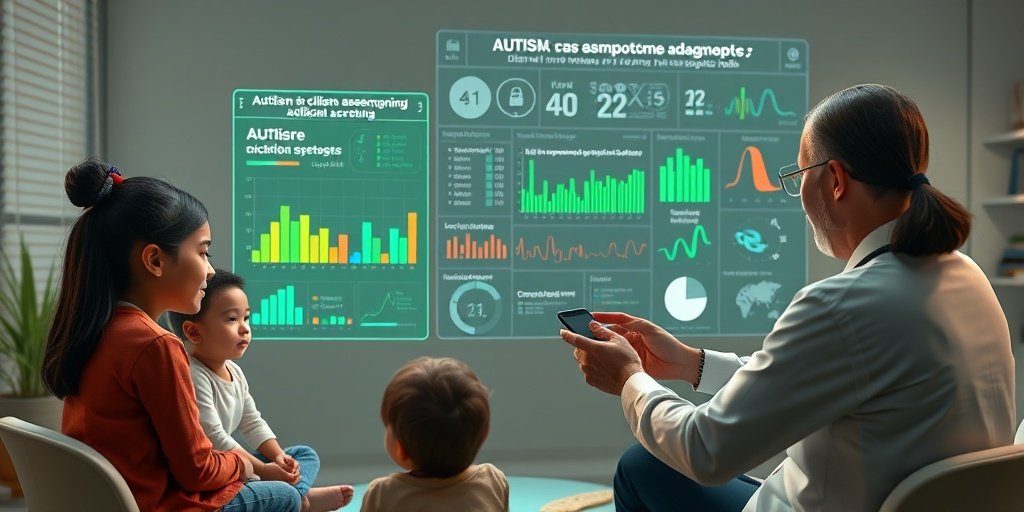⚡ Quick Summary
This study utilized machine learning to enhance the accuracy of autism spectrum disorder (ASD) screening, achieving an impressive 95.23% accuracy with a cohort of 2,794 individuals. The research identified three distinct ASD subgroups based on clinical symptoms and gene expression patterns, paving the way for more personalized intervention strategies.
🔍 Key Details
- 📊 Dataset: 2,794 individuals from the AGRE database and molecular data from GSE15402
- 🧩 Features used: ADI-R scores and gene expression data
- ⚙️ Technology: Deep learning models for screening
- 🏆 Performance: Screening accuracy of 95.23% (CI 94.32-95.99%)
🔑 Key Takeaways
- 🤖 Machine learning significantly improves ASD screening accuracy.
- 📈 Deep learning models achieved a remarkable accuracy of 95.23%.
- 🧬 Three distinct ASD subgroups were identified based on clinical and molecular data.
- 💡 Clinical observations may be more effective than molecular data for identifying ASD subtypes.
- 🔍 Streamlined diagnostic tools could be developed using just 27 ADI-R sub-items.
- 🌟 Personalized intervention strategies can be informed by these findings.
- 📚 Study published in Sci Rep, highlighting the integration of clinical and molecular data.

📚 Background
Autism spectrum disorder (ASD) is characterized by a wide range of clinical manifestations and biological complexities, making diagnosis and intervention challenging. Traditional screening methods often fall short due to the disorder’s heterogeneous nature. Recent advancements in machine learning offer promising avenues for improving screening accuracy and understanding the underlying biological profiles of ASD.
🗒️ Study
The study conducted by Yuwattana et al. aimed to leverage machine learning techniques to enhance ASD screening and identify meaningful subgroups. By analyzing clinical assessments from the AGRE database alongside molecular data from GSE15402, the researchers sought to uncover patterns that could lead to more effective diagnostic tools and interventions.
📈 Results
The analysis of ADI-R scores from the large cohort revealed that deep learning models could achieve a screening accuracy of 95.23%. Notably, this performance was consistent even when using a streamlined set of just 27 ADI-R sub-items. Clustering analyses identified three distinct subgroups of ASD, each characterized by unique clinical symptoms and gene expression patterns, indicating that clinical features may provide stronger associations with molecular profiles than gene expression alone.
🌍 Impact and Implications
The findings from this study have significant implications for the future of ASD diagnosis and treatment. By integrating clinical observations with molecular data through machine learning, we can develop more precise screening methods and personalized intervention strategies. This approach not only enhances our understanding of ASD subtypes but also holds the potential to improve outcomes for individuals with autism.
🔮 Conclusion
This research highlights the transformative potential of machine learning in the field of autism screening and intervention. By focusing on detailed clinical observations, we can identify biologically meaningful subtypes of ASD, leading to more effective and personalized care. The integration of clinical and molecular data represents a promising direction for future research and clinical practice in autism spectrum disorder.
💬 Your comments
What are your thoughts on the use of machine learning for autism screening? We would love to hear your insights! 💬 Leave your comments below or connect with us on social media:
Machine learning of clinical phenotypes facilitates autism screening and identifies novel subgroups with distinct transcriptomic profiles.
Abstract
Autism spectrum disorder (ASD) presents significant challenges in diagnosis and intervention due to its diverse clinical manifestations and underlying biological complexity. This study explored machine learning approaches to enhance ASD screening accuracy and identify meaningful subtypes using clinical assessments from AGRE database integrated with molecular data from GSE15402. Analysis of ADI-R scores from a large cohort of 2794 individuals demonstrated that deep learning models could achieve exceptional screening accuracy of 95.23% (CI 94.32-95.99%). Notably, comparable performance was maintained using a streamlined set of just 27 ADI-R sub-items, suggesting potential for more efficient diagnostic tools. Clustering analyses revealed three distinct subgroups identifiable through both clinical symptoms and gene expression patterns. When ASD were grouped based on clinical features, stronger associations emerged between symptoms and underlying molecular profiles compared to grouping based on gene expression alone. These findings suggest that starting with detailed clinical observations may be more effective for identifying biologically meaningful ASD subtypes than beginning with molecular data. This integrated approach combining clinical and molecular data through machine learning offers promising directions for developing more precise screening methods and personalized intervention strategies for individuals with ASD.
Author: [‘Yuwattana W’, ‘Saeliw T’, ‘van Erp ML’, ‘Poolcharoen C’, ‘Kanlayaprasit S’, ‘Trairatvorakul P’, ‘Chonchaiya W’, ‘Hu VW’, ‘Sarachana T’]
Journal: Sci Rep
Citation: Yuwattana W, et al. Machine learning of clinical phenotypes facilitates autism screening and identifies novel subgroups with distinct transcriptomic profiles. Machine learning of clinical phenotypes facilitates autism screening and identifies novel subgroups with distinct transcriptomic profiles. 2025; 15:11712. doi: 10.1038/s41598-025-95291-5